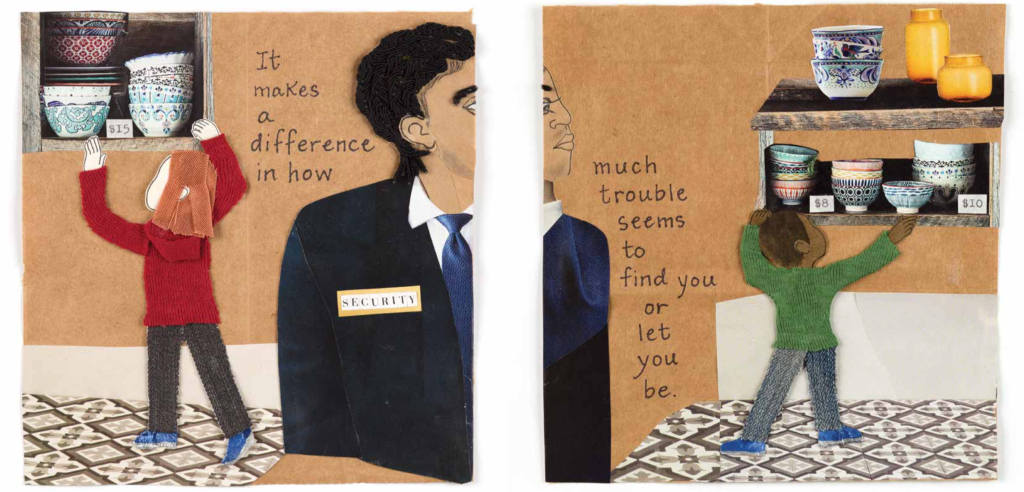
Many parents arrive in hospitals for unexpected visits, sick or injured child in tow. In emergency situations, they probably don’t have a child’s favorite toy or game with them, and they may find themselves waiting long hours without a way to distract or occupy their unhappy child. Even during expected hospitalizations, there are times when a child has to visit and wait in areas of the hospital, for tests and procedures, where they have nothing but institutional walls to greet them. Child Life Specialists know the value of great distraction tools to soothe anxiety during long waiting periods and painful procedures.
With this in mind, I would like to welcome guest blogger Patricia Montouchet, the founder of Walli-Kids. She has a great product for parents, child life specialists, hospitals, and doctors’ offices.

Today I am going to tell you about Walli-Kids, the company I created a few years ago.
You might wonder what started Wallikids ?
Difficult to pinpoint exactly how the idea and the vision fell into place, but …
Many years ago, as every mother, I recall being awfully stressed when my son crashed his bicycle, hard enough to break open his helmet. We had to rush to the emergency room and… I will skip all the details. Needless to say, we had to wait long hours on that Saturday afternoon…
What to do? How to distract Lucas? What could I do to ease his pain, anxiety and hide the waiting.
Nothing, I had nothing… In our hurry, I forgot to take his books, games or even his favorite stuffed animal friend as time was of the essence. There was no picture on the walls to help distract him, no child books. Without any doubt, this was a difficult and striking experience for me.
When my children left for college, I decided it was time to do something I would really enjoy. My daughter Margot is very creative and together, we started drawing Ralph the Giraffe© and Mitch the Fish© which would, after a few years, be part of our Animal Buddies collection.
Coleman the Pelican© was created after a family vacation at the beach.

Myrtle the Turtle© after reading about the Great Coral Reef and

 Abigail the Snail© to remember our many summer vacations in our native French Alps.
Abigail the Snail© to remember our many summer vacations in our native French Alps.
Walli-Kids Animal buddies Collection is for younger kids that don’t know how to read: they have to look for numbers and pictures, soon they will start having fun. Under an adult supervision, all the many details can be highlighted such as a frog group or a crab family… These colorful designs are a conversation starter for the medical staff as it is easy to start a storytelling or ask to find other hidden animals. These posters are perfect for kids to learn new words and discover new places
At that point, we had something for younger kids but nothing for the ones who could read, so our Puzzle-Jumbles collection was created…

This was countless hours of assembling arrays of diverse and colorful objects. Enough to keep the children entertained for a while and well-hidden to make their focus last longer…
Nevertheless, we had a lot of fun figuring out what would go into each activity-poster and then counting and re-counting each object to make sure that it was all there. The hardest Puzzle-Jumble activity-poster you might wonder? Without any doubt Animal XL© and #8 XL©

We are still working on our 3rd collections: Same difference. I will keep you posted soon…
Now, the best part is that I can write about how excited I am to share with you our newest product: Acry-Walli. Our designs are reverse printed on a rigid 1/8 inch thick sheet of clear acrylic with a white vinyl backing. The end product displays vivid colors and is very durable. It is very easy to clean with any antibacterial solution, it will not be damaging to the ink as it is reverse printed. These activity-posters can be screwed on to the walls , hardware and color snap-caps are provided to hide the screws. All our designs have rounded corners to avoid catching little fingers.

You might ask where is the best place to put the Acry-Walli? On walls, in waiting rooms, consulting and treatment rooms. Note that since we design and manufacture every product here in Atlanta, we are able to offer any size, or even incorporate our customers’ mascot or logo in the design.
There is another product that I should mention as it has become Child Life Specialists’ best friend: our Walli-Kids lap-posters printed on a high quality styrene. All of our designs are available in this 12”x10” hand held size. We came up with this smaller dimension to make it portable and help young patients focus on something colorful and attention grabbing during medical procedures such as treatments, vaccinations… I must mention that many hospitals use them in their waiting room to help with the waiting.
As you read my article to the end, you deserve “a little something”, so if you enter your contact information on our website, Facebook or Twitter, your name will be entered in our drawing for 2 free lap-posters, one from each of our collections.
Should you have any questions on our products, do not hesitate to email me at patricia@wallikids.com.

































